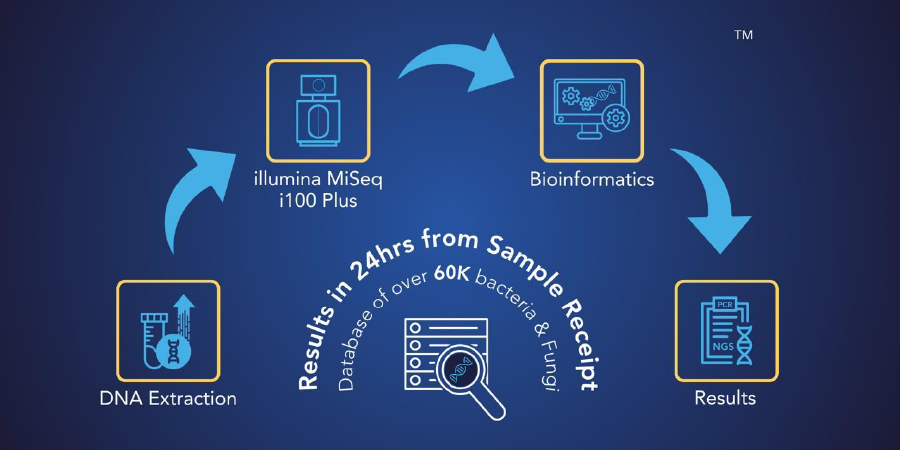Viable but non-culturable (VBNC) bacteria are essentially ‘dormant’ bacteria that have intrinsically low metabolic activities and are non-proliferative. They are unable to grow and multiply.
Research has pointed to VBNC state as a pro-survival strategy employed by certain bacteria to withstand harsh environmental stressors, such as UV radiation, nutrient deprivation, reduced osmotic potential, oxygen levels, and even antibiotic treatment. These stressors induce injuries in bacteria causing them to enter the VBNC state. This ‘hibernation-like’ state ensures that the bacteria survive and persist despite the difficult conditions.
One of the major characteristics of VBNC bacteria is that they do not grow in nutrient-rich culture plates or broth that would otherwise support their growth. However, that does not mean that the bacteria are dead. Because the structural integrity of the bacteria is maintained (proteins, cell walls, nucleic acids), VBNC bacteria remain viable.
At times, VBNC bacteria may reduce their cell size or change their cell shapes, which are thought to be a way to reduce energy consumption.1 The composition of the bacterial cell wall is also altered in VBNC bacteria – peptidoglycan cross-linking and changes in protein and membrane lipid content allow VBNC bacteria to be more resistant towards external mechanical and chemical insults. Favorable conditions to return from VBNC state are not completely understood but do not seem to be limited to nutrient availability.
VNBC bacteria can be found everywhere – food, water, soil, plants, animals, and in infected patients2 – and while different bacteria species have been found to be able to enter the VNBC state, pathogenic VNBC bacteria are especially concerning. Currently, there are more than 60 species of pathogenic bacteria known to be capable of entering the VNBC state.2
Although it is unlikely that bacteria in the VBNC state cause infection, studies have shown that VBNC bacteria can cause disease after they exit the VBNC state. For instance, the commonly occurring ‘latent tuberculosis’ can be attributed to VBNC Mycobacterium tuberculosis.3,4 Even if VBNC bacteria cannot directly lead to an infection, pathogenic VBNC bacteria retain their virulence and can cause infections once resuscitated.5,6,7
In fact, one study showed that VBNC forms of pathogenic bacteria Vibrio spp were able to be revived and cause an infection in mice models.3 In addition, studies have shown that VBNC bacteria are antibiotic-resistant, playing important roles in reinfections in patients who have received antibiotic treatments.8
Biofilms, an accumulation of adherent bacteria that form an encapsulated microbial ‘community, are also known to harbor VBNCs. Biofilms are often found on implants, causing severe infections in patients. VBNC Staphylococcus aureus in biofilms are likely to contribute to the recurrence of chronic implant-associated infections.9
In pharmaceutical manufacturing industries, as well as food and water processing facilities, where microbial testing is routinely performed as part of the quality control protocol, contamination by VBNC bacteria may go undetected, posing health risks to the public. Foodborne pathogen Salmonella typhimurium, which causes gastroenteritis, is capable of entering VBNC state. Additionally, Escherichia coli, which causes diarrhea and hemorrhagic colitis, as well as Pseudomonas aeruginosa (P. aeruginosa), which causes infections such as urinary tract infections, pneumonia, and gastrointestinal infections, are both found to be able to enter VBNC states.10 It is clear that VBNC bacteria have the potential to cause serious health and safety issues.
VBNC bacteria can easily evade detection
 Conventional microbial detection methods rely heavily on cell counting, microscopy, and cell cultures. Counting cells or colony-forming units (CFU) in cultures are conventional methods to detect microbes. However, due to the unique non-culturable characteristic of VBNC bacteria, detection by culture will result in high rates of false negatives.
Conventional microbial detection methods rely heavily on cell counting, microscopy, and cell cultures. Counting cells or colony-forming units (CFU) in cultures are conventional methods to detect microbes. However, due to the unique non-culturable characteristic of VBNC bacteria, detection by culture will result in high rates of false negatives.
Over the years, with more knowledge of VBNC bacteria, improved techniques are employed to detect the presence of VNBC.11 For example, fluorescence-based dyes are able to discriminate viable cells from dead cells. This allows for VBNC bacteria to be detected by using combinations of these dyes. However, this method might still be inaccurate if the VBNC bacteria are present in extremely low numbers.
Studies have revealed VBNC bacteria do have distinctly different gene expression profiles than the culturable cells. This prompted the use of qPCR-based detection of VBNC cells. An advantage of using this qPCR-based approach is VBNC bacteria that are low in cell numbers can still be reliably detected since sufficient mRNA can be isolated from small numbers of cells. Indeed, qPCR has shown success in detecting bacterial nucleic acids in culture-negative samples of patients suffering from infections.12 P. aeruginosa and its VBNC state were detectable via qPCR in sputum samples.13 qPCR is, however, limited as a detection method by its limited panel size, thus the ideal way to detect VBNC bacteria is through the use of NGS.
Next-generation sequencing can accurately detect and identify VBNC bacteria
Next-generation sequencing (NGS) is a powerful and efficient DNA sequencing technology that has a high sensitivity and specificity. It is able to accurately detect and identify difficult-to-culture microbes, including VBNC bacteria14, which could be present in small numbers and undetectable by conventional testing methods.
MicroGenDX, a leader in molecular diagnosis of microbial infections, offers an advanced NGS+qPCR service that is able to detect the DNA of VBNC bacteria. MicroGenDX’s NGS+qPCR solution is cost-effective and has a short turn-around time. Better clinical decisions can be made to improve patient outcomes.
In addition, MicroGenDX’s qPCR testing is able to identify antibiotic-resistant genes, allowing clinicians to dispense the appropriate treatments to their patients. This not only vastly increases the quality of patient care, but also aids in improving antibiotic stewardship. Ultimately, reducing unnecessary antibiotic treatments can help prevent the formation of antibiotic-induced VBNC bacteria in the first place.
Resources
- https://www.frontiersin.org/articles/10.3389/fmicb.2014.00258/full#B68
- https://www-tandfonline-com.stanford.idm.oclc.org/doi/full/10.3109/1040841X.2013.794127
- https://academic-oup-com.stanford.idm.oclc.org/femsre/article/36/3/514/634506
- https://academic-oup-com.stanford.idm.oclc.org/femsre/article/34/4/415/538375
- https://pubmed-ncbi-nlm-nih-gov.stanford.idm.oclc.org/18248440/
- https://pubmed-ncbi-nlm-nih-gov.stanford.idm.oclc.org/14580971/
- https://aem.asm.org/content/73/4/1349.long
- https://jb.asm.org/content/200/20/e00249-18#ref-11
- https://pubmed.ncbi.nlm.nih.gov/23515246/
- https://academic-oup-com.stanford.idm.oclc.org/femsle/article/365/2/fnx249/4668413
- https://www.ncbi.nlm.nih.gov/pmc/articles/PMC4116801/
- https://pubmed.ncbi.nlm.nih.gov/24627954/
- https://bmcinfectdis.biomedcentral.com/articles/10.1186/s12879-018-3612-9
- https://www.ncbi.nlm.nih.gov/pmc/articles/PMC6520317/


